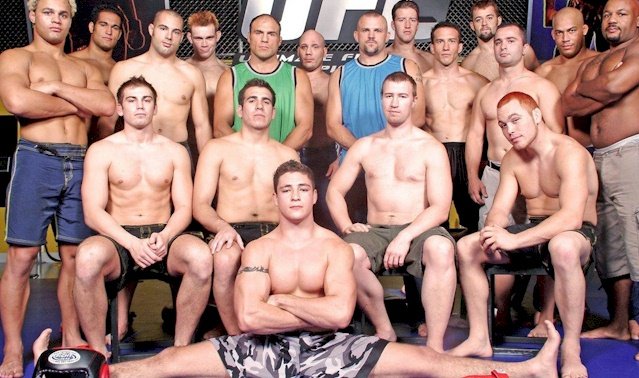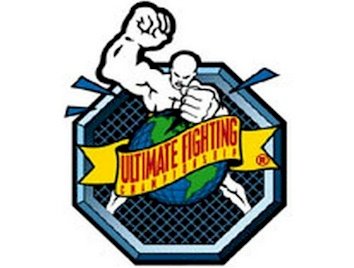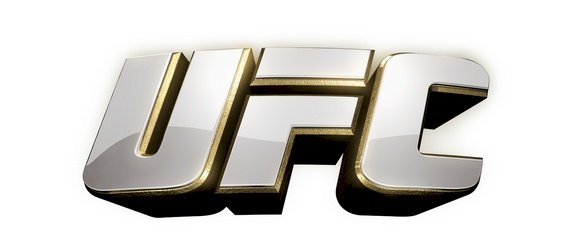The UFC logo and the history of the company
Ultimate Fighting Championship (UFC) is one of the most popular fighting competitions globally. However, the company has gone through a long journey to arrive at its current position in the world of fighting competitions.
The ultimate fighting championship was started by Arthur Davie and Rorion Gracie, an expert in Brazilian jiu-jitsu. The UFC aimed to promote the family martial art school. Gracie’s family was already famous for their legendary “The Gracie Challenge.” The tournament featured experts from other fields of fighting facing off with one of Gracie Family member or their students in a real fight.

Davie as the advertisement person came up with an idea of a martial arts tournament that was forwarded to Semaphore Entertainment Group (SEG). The tournament aimed to determine which was the best fighting style. An SEG employee, Michael Abramson, coined the name of the event as “The Ultimate Fighting Championship.”
The first UFC event was done on 12th November 1993 at McNichols Sports Arena, Denver, Colorado. The event became commonly known as UFC 1. Earlier Ultimate Fighting Championship competitions aimed at identifying the most effective martial art from different fighting disciplines like karate, judo, Muay Thai, boxing, Brazilian Jiu-Jitsu, Sambo and wrestling. Fighters started using techniques from different disciplines, which resulted in the creation of a Mixed Martial Arts style of fighting.
In 1995 after UFC 5, Davie and Gracie’s sold their shares to SEG and at the same time disbanded WOW promotions. However, Davie continued as the show booker and matchmaker and also held the position of the commissioner up until December 1997. UFC reputation in early years was as an extremely violent event, which was evident from their disclaimer at the beginning, warning viewers of the violence in the sport.
Due to the violent nature of the championship, U.S. authority took an interest. Senator John McCain termed it “human cockfighting” and tried to influence governors in all the states to ban the event. Out of fifty states, thirty-six of them passed regulations banning fighting with no-holds-barred which made UFC 12 to relocate from New York to Dothan Alabama. UFC events were aired on Direct Pay Per View, but the audience was small compared to cable PPV platforms during the era.
The criticism made UFC to increase its cooperation with athletic commissions and helped in redesigning the rules by removing what was considered unpalatable. UFC still retained the core features of the fights. The company introduced the classification of weights with UFC 12 and fish-hooking ban. UFC 14 made use of gloves mandatory and banned head kicks to a downed opponent. UFC 15 introduced rules banning pulling of hair, back of the neck, and head strike bans. UFC 15 also banned manipulation of small-joints and strikes on the groin.
With the leadership of Jeff Blatnick and John McCarthy, UFC continued to work with the state’s athletic commissions. UFC came up with a policies manual containing procedures, rules, and code of conduct which are still in use even today. In the early 2000s, due to bankruptcy, SEG sold UFC to Frank and Lorenza Fertitta’s. Ferrtitas created Zuffa LLC. In 2001 UFC returned to Pay-Per-View cable television.
The Ultimate Fighter
The ultimate fighter was a reality show on television which featured Mixed Martial Arts fighters in competition to win six-figure cash. The company approached Spike TV and offered to foot the production cost to a tune of $10 million which enabled the company to get an outlet after rejection by many other networks. Spike TV launched The Ultimate Fighter in 2005, and the show became an instant success.

December 2006 Zuffa purchased World Extreme Cage fighting (WEC) to prevent International fight league from making a deal with NBC sports network. WEC featured lightweights while UFC showcased heavyweight’s classes. UFC also acquired the World Fighting Alliance (WFA) thus gaining their notable fighters as well.
In 2007 March UFC had an agreement of acquisition of rival PRIDE Fighting Championships based in Japan. By October 2007 UFC pride worldwide closed its Japan offices due to the closing of its parent company Dream Stage Entertainment. In 2006 Zuffa purchased World Extreme Cagefighting (WEC) and held the first event in January 2007. Versus network aired WEC/UFC event in June 2007 and in October 2010, UFC absorbed WEC fully and did their last championships of Bantamweight and featherweight.
In March 2011 Zuffa announced its purchase of Strikeforce. Under Zuffa, the ownership strike force adopted unified rules of MMA in full. Strike-force final show was at the beginning of 2013. Ultimate Fighting Championship announced a broadcast deal of seven years through Fox sports ending Spike TV and NBC Sports Network partnership.
Looking For a Logo Designer?
Over 30,000 businesses have trusted LogoMyWay with their logo design. We have thousands of logo designers ready to work on your new logo.
UFC Logo History
UFC logo has undergone numerous changes since its inception, perhaps to keep the tournament alive in peoples minds and to keep up with the current trends. Finally, they were able to arrive at the perfect design that could relate well with fans and truly represent the company’s brand.
In the beginning, between 1993 and 1999 the company first used the words “The Ultimate Fighting Championship” in its logo, which consisted of only text. The logo was later redesigned bearing a muscled bald man towering over the globe with the words ultimate fighting championship in red color. The text was on banner overlapping the globe while the background of the logo consisted of an octagonal design with crisscrossing lines inside. The image of the man extended to the outside the octagon design.
From 1999 to 2001 the logo bared the same bald man inside a semi-circle with a globe background. The man towered over the initials UFC in red color with a white outline. The characters were all in capital letters. From 2001 to 2015 the logo was re-designed using the initials UFC in upper case and black color. The letter F had two parts, the top part being a thick horizontal line and the bottom part as a mirrored L. The characters were italic.
From 2001 to 2015 the logo was re-designed using the initials UFC in upper case and black color. The letter F had two parts, the top part being a thick horizontal line and the bottom part as a mirrored L. The characters were italic.

2001 to 2002 the logo had a black background with the characters having a yellow color. The octagon appeared as an outline behind the text. The text Ultimate fighting Championship appeared in a single line with an underline. During the era of 2002 to 2004, there was a diamond pattern in the octagon. The full text appeared in two lines with the word Championship having the first and the last letters bigger than the rest. From 2004 to 2005 the black background was removed, but all other features remained. The only difference from the preceding logo was only the removal of background.
From 2005 to 2015, the logo was re-designed with UFC characters with the words Ultimate Fighting Championship beneath them. The text in the logo appeared the same as in the year 2004 – 2005 except for the color and lack of the octagon background.
The logo was entirely in black. Between 2001 and 2011 an alternate logo was available which had the UFC characters enclosed within an octagon. The logo did not have the full text. Ziffa, LLC also used an alternate 3D logo between 2009 to 2015. The logo had a white foreground and curved just having only UFC characters.
Ziffa, LLC also used an alternate 3D logo between 2009 to 2015. The logo had a white foreground and curved just having only UFC characters.
Between 2011 and 2015 the company used an alternate logo made of an octagon divided into three parts diagonally which was followed by the UFC characters. The logo used only one color.
During its anniversaries, the company unveils logos for use in its promotions. Anniversary logos and other creative designs are used in UFC broadcasts across varying platforms such as social, print, and digital. The same is also used in the branding of the Octagon “fighting ring,” collection receipts, and posters for announcing events. Anniversary is also used branding fighting uniforms and gears and fans clothes like T-shirts, jerseys, caps, among others. Good examples are the 20th-anniversary logo launched in 2013 and the 25th-anniversary logo launched in 2018. The logo uses the UFC octagon to join together with the silver anniversary. It has the main UFC logo at the top right corner.
UFC Logo launched in 2015
From 2015 to present the logo bears only the characters UFC with F in two parts. The letters are in red. The logo does not have the full meaning of UFC, which may be as a result of the popularity of the events exhibited by UFC. Viewers in the world are currently aware of what is synonymous with UFC and the type f events sponsored.

The UFC logo is normally incorporated when announcing events in creative designs. Below pictures shows how the current logo has been used alternatively for various events. During such cases, the primary logo color may change, but mainly they alternate between red and white. Red in the logo signifies determination, courage, and passion. The white symbolizes the reliability and integrity of the Ultimate Fighting Championship.
A logo can be a key factor in helping a company to grow and succeed. The history of the UFC logo is a testament to the company’s determination, struggle, and perseverance since it started and continued to grow into a global brand.









